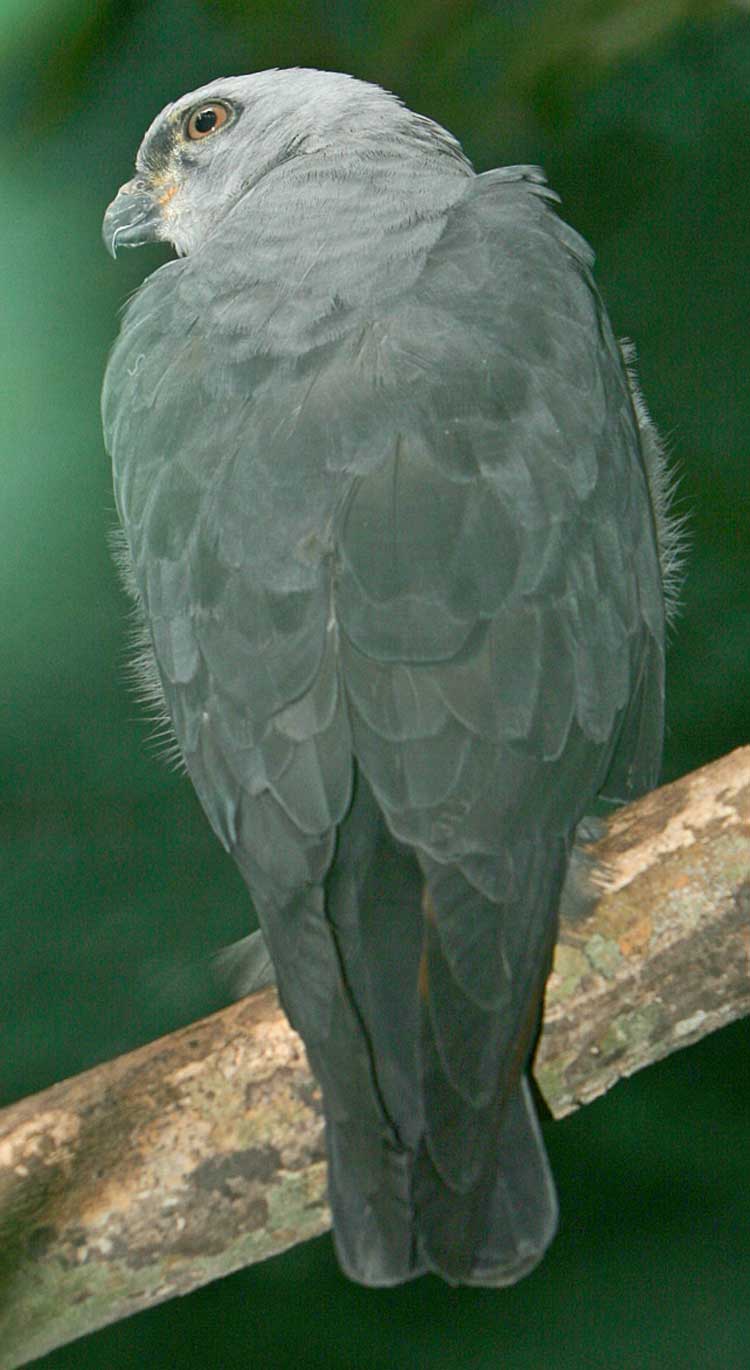
Ictinia plumbea (*)
Superregnum: Eukaryota
Cladus: Unikonta
Cladus: Opisthokonta
Cladus: Holozoa
Regnum: Animalia
Subregnum: Eumetazoa
Cladus: Bilateria
Cladus: Nephrozoa
Superphylum: Deuterostomia
Phylum: Chordata
Subphylum: Vertebrata
Infraphylum: Gnathostomata
Megaclassis: Osteichthyes
Cladus: Sarcopterygii
Cladus: Rhipidistia
Cladus: Tetrapodomorpha
Cladus: Eotetrapodiformes
Cladus: Elpistostegalia
Superclassis: Tetrapoda
Cladus: Reptiliomorpha
Cladus: Amniota
Classis: Reptilia
Cladus: Eureptilia
Cladus: Romeriida
Subclassis: Diapsida
Cladus: Sauria
Infraclassis: Archosauromorpha
Cladus: Crurotarsi
Divisio: Archosauria
Cladus: Avemetatarsalia
Cladus: Ornithodira
Subtaxon: Dinosauromorpha
Cladus: Dinosauriformes
Cladus: Dracohors
Cladus: Dinosauria
Cladus: Saurischia
Cladus: Eusaurischia
Subordo: Theropoda
Cladus: Neotheropoda
Cladus: Averostra
Cladus: Tetanurae
Cladus: Avetheropoda
Cladus: Coelurosauria
Cladus: Tyrannoraptora
Cladus: Maniraptoromorpha
Cladus: Maniraptoriformes
Cladus: Maniraptora
Cladus: Pennaraptora
Cladus: Paraves
Cladus: Eumaniraptora
Cladus: Avialae
Infraclassis: Aves
Cladus: Avebrevicauda
Cladus: Pygostylia
Cladus: Ornithothoraces
Cladus: Ornithuromorpha
Cladus: Carinatae
Parvclassis: Neornithes
Cohors: Neognathae
Cladus: Neoaves
Ordo: Accipitriformes
Familia: Accipitridae
Subfamilia: Milvinae
Genus: Ictinia
Species: Ictinia plumbea
Name
Ictinia plumbea (Gmelin, 1788: 283) [org. comb. Falco plumbeus]
References
Gmelin, J.F. 1788. Caroli a Linné systema naturae per regna tria naturae, secundum classes, ordines, genera, species, cum characteribus, differentiis, synonymis, locis. Tomus I. Editio decima tertia, aucta, reformata. - pp. i–xii, 1–500. Lipsiae. (Beer). DOI: 10.5962/bhl.title.545 BHL Reference page. [original description: p. 283]
Vernacular names
čeština: Luňák šedivý
English: Plumbeous Kite
español: Elanio plomizo
polski: Cykojad szary
português: Sovi, Gavião-pombo
The plumbeous kite (Ictinia plumbea) is a bird of prey in the family Accipitridae that is resident in much of northern South America. It is migratory in the northern part of its range which extends north to Mexico. It feeds on insects which it catches either from a perch or while in flight.
Taxonomy
The plumbeous kite was formally described in 1788 by the German naturalist Johann Friedrich Gmelin in his revised and expanded edition of Carl Linnaeus's Systema Naturae. He placed it with the eagles, hawks and relatives in the genus Falco and coined the binomial name Falco plumbeus.[2] Gmelin based his description on the "spotted-tailed hawk" that had been described in 1781 by the English ornithologist John Latham from a specimen from Cayenne in a private collection in London.[3] It is now placed with the Mississippi kite in the genus Ictinia that was introduced in 1816 by the French ornithologist Louis Pierre Vieillot.[4][5] The genus name is from the Ancient Greek iktinos for a kite. The specific epithet plumbea is from Latin plumbeus meaning "leaded", "plumbeous" or "lead-coloured".[6] The species is monotypic: no subspecies are recognised.[5]
Plumbeous kite in flight
Description
The plumbeous kite is 34–37.5 cm (13.4–14.8 in) in overall length. The male weighs 190–267 g (6.7–9.4 oz), the slightly larger female 232–280 g (8.2–9.9 oz). It has long, pointed wings. Adults are mainly slate-grey, with a paler head and underparts. The short black tail has 2-3 white bands on the undersurface. The eyes are red and the legs are orange. In flight, this kite shows a rufous primary patch. Sexes are similar, but immature birds have white-streaked grey upperparts and dark-streaked whitish underparts. They lack the rufous wing patch. The call of plumbeous kite is a whistled si-see-oo.[7]
The plumbeous kite is darker gray overall than the strongly migratory Mississippi kite which has white patches on the secondaries and lacks the rufous patches on the primaries.[8]
Distribution and habitat
The plumbeous kite is a bird of lowland forest and savannah. It breeds in the Neotropical realm, from eastern Mexico to Peru, Bolivia and Argentina. It also breeds on Trinidad. Birds in the north and south of the breeding range, including the populations in Central America, Trinidad, Venezuela and Colombia, and southern Argentina and Brazil, are migratory, moving into tropical South America in the northern winter.[7]
Behavior and ecology
It is not particularly gregarious, although it is sometimes seen in flocks during migration.[8]
Breeding
The deep stick nest is placed high in a tree, sometimes in a mangrove swamp over water.[7] The clutch is usually a single egg but occasionally two eggs are laid. They are either white of very pale blue and measure about 41 mm × 35 mm (1.6 in × 1.4 in). The eggs are incubated for 32-33 days by both parents.[8] The chicks are covered with white down and are fed by both parents. The young fledge when around a month of age.[7]
Food and feeding
The plumbeous kite catches insects either in flight or from a perch. It will also occasionally prey on snails, frogs, lizards, bats, birds and snakes.[8][9][10]
References
BirdLife International (2020). "Ictinia plumbea". IUCN Red List of Threatened Species. 2020: e.T22695069A168776229. doi:10.2305/IUCN.UK.2020-3.RLTS.T22695069A168776229.en. Retrieved 11 November 2021.
Gmelin, Johann Friedrich (1788). Systema naturae per regna tria naturae : secundum classes, ordines, genera, species, cum characteribus, differentiis, synonymis, locis (in Latin). Vol. 1, Part 1 (13th ed.). Lipsiae [Leipzig]: Georg. Emanuel. Beer.
Latham, John (1781). A General Synopsis of Birds. Vol. 1, Part 1. London: Printed for Leigh and Sotheby. p. 106, No. 92.
Vieillot, Louis Pierre (1816). Analyse d'une Nouvelle Ornithologie Élémentaire (in French). Paris: Deterville/self. p. 24.
Gill, Frank; Donsker, David; Rasmussen, Pamela, eds. (August 2022). "Hoatzin, New World vultures, Secretarybird, raptors". IOC World Bird List Version 12.2. International Ornithologists' Union. Retrieved 7 December 2022.
Jobling, James A. (2010). The Helm Dictionary of Scientific Bird Names. London: Christopher Helm. p. 202, 310. ISBN 978-1-4081-2501-4.
Thiollay, J.M. (1994). "Plumbeous kite". In del Hoyo, J.; Elliott, A.; Sargatal, J. (eds.). Handbook of the Birds of the World. Vol. 2: New World Vultures to Guineafowl. Barcelona, Spain: Lynx Edicions. p. 118. ISBN 978-84-87334-15-3.
Yu, H. (2020). Schulenberg, T.S. (ed.). "Plumbeous Kite (Ictinia plumbea), version 1.0". Birds of the World. Ithaca, NY, USA: Cornell Lab of Ornithology. doi:10.2173/bow.plukit1.01. Retrieved 7 December 2022.
"Plumbeous Kite | the Peregrine Fund".
Ferguson-Lees, J. & Christie, D.A. & Franklin, K. & Mead, D. & Burton, P.. (2001). Raptors of the world. Helm Identification Guides.
Retrieved from "http://en.wikipedia.org/"
All text is available under the terms of the GNU Free Documentation License

